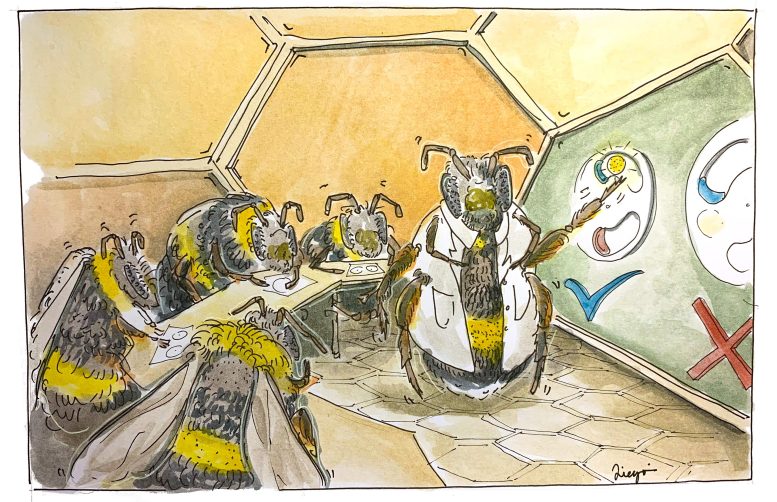
Bumblebees can learn by watching a trained bee demonstrating one of two ways to solve puzzle for a sugary reward, then copy the bee to solve the puzzle in the same way. Credit: Diego Perez-Lopez, PLOS (CC-BY 4.0)
Bees that learned from others were more adept and preferred the learned solution over alternatives.
Bumblebees learn to solve a puzzle by watching more experienced bees, and this behavioral preference then spreads through the colony, according to a study published on March 7th in the open access journal PLOS Biology by Alice Dorothy Bridges and colleagues at Queen Mary University of London, UK.
Social animals like primates are skilled at learning by watching others, and previous work has shown that individual bees can learn tasks in this way, but it remained unclear whether these new behaviors would then spread through the colony. To investigate, researchers tested six colonies of bumblebees (Bombus terrestris) using a puzzle box that could be opened by rotating a lid to access a sugar solution. The bees could rotate the lid either clockwise or anticlockwise by pushing one of two different colored tabs.
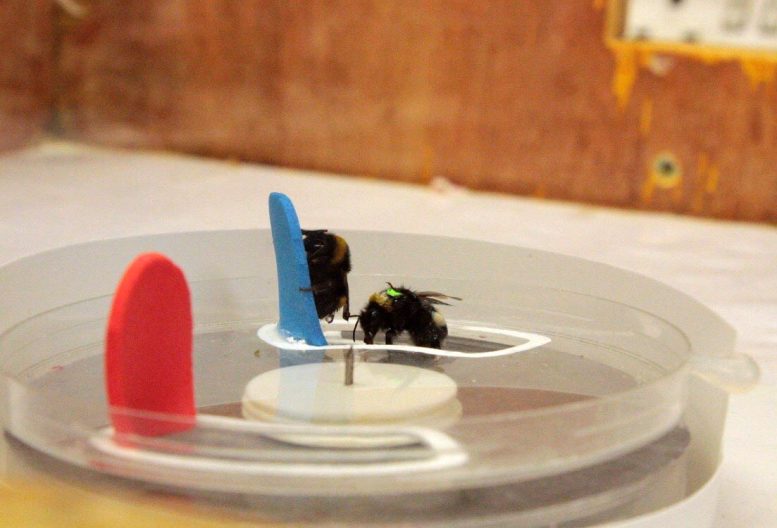
Bees feeding from a puzzle box opened by pushing the blue tab. Credit: Alice Bridges (CC-BY 4.0)
The researchers trained bees to use one of these two solutions and then released these ‘demonstrator’ bees into a foraging arena alongside untrained bees and filmed them over a period of six to twelve days. Foraging bees with a demonstrator opened more puzzle boxes than control bees, and used the same puzzle solution that the demonstrator had been taught 98% of the time, suggesting that they learned the behavior socially rather than stumbling upon a solution themselves. In experiments where multiple demonstrators were each taught a different solution to the puzzle, untrained bees initially learned to use both methods, but over time they randomly developed a preference for one solution or the other, which then came to dominate in that colony.
A bee opens a puzzle box by pushing against the red tab to rotate the lid of the box clockwise. Credit: Bridges AD et al., 2023, PLOS Biology
The study is the first to document the spread of different behavioral approaches to solving the same problem in bees. The results provide strong evidence that social learning is important for the transmission of new behaviors through bumblebee colonies, as has previously been shown in primates and birds, the authors say.
Bridges adds, “These results in bumblebees, which are tiny-brained invertebrates, echo those previously found using similar experiments in primates and birds – which were used to demonstrate the capacity of those species for culture.”
For more on this research, see Bumblebees Learn To Solve Puzzles by Watching Other Bees.
Reference: “Bumblebees acquire alternative puzzle-box solutions via social learning” by Alice D. Bridges, HaDi MaBouDi, Olga Procenko, Charlotte Lockwood, Yaseen Mohammed, Amelia Kowalewska, José Eric Romero González, Joseph L. Woodgate and Lars Chittka, 7 March 2023, PLOS Biology.
DOI: 10.1371/journal.pbio.3002019

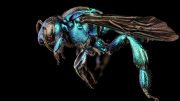
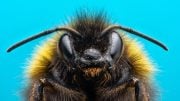

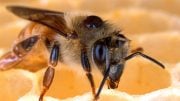

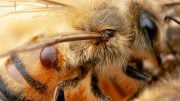
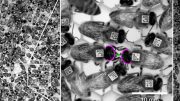
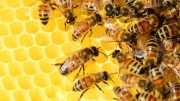
Be the first to comment on "Bees Learn by Watching Others: Puzzle Solving Behavior Spreads Through Bumblebee Colonies"